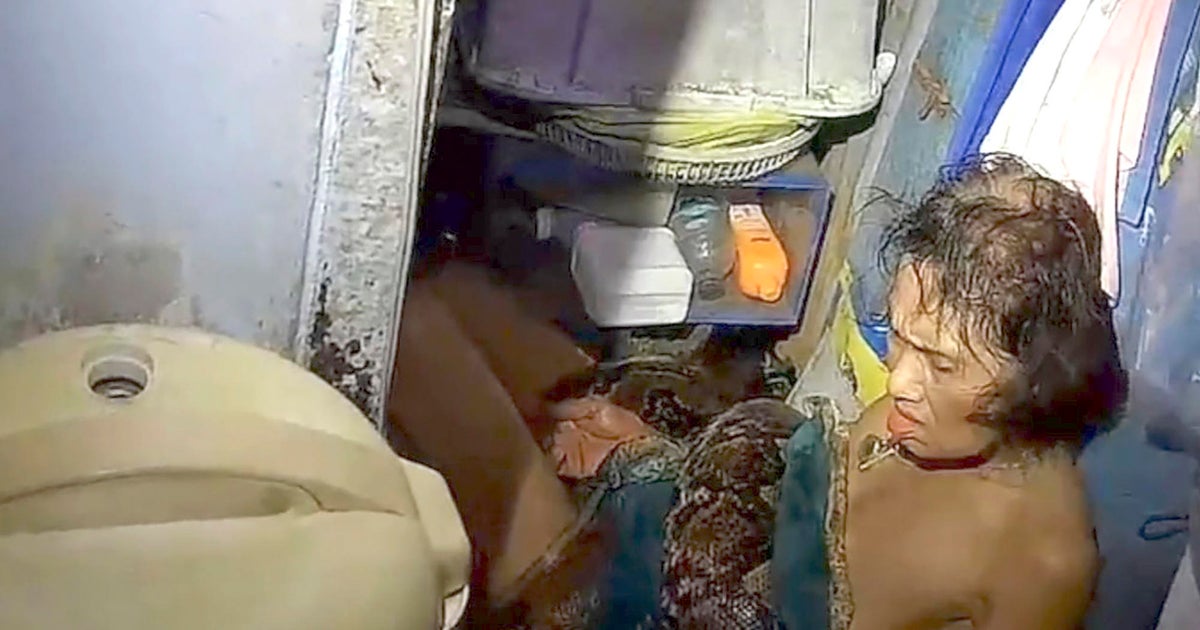Star Tribune
Controversial autism therapy is the main option for Minnesota families

For Fatima Molas’ son, years of a controversial autism treatment helped him with daily skills, like potty training. But, she said, that therapy called applied behavior analysis (ABA) is not the right fit for every kid.
Joyner Emerick’s family decided early on the intervention was not something they wanted for their son, in part because they didn’t want him to look less autistic.
“This is just a typical form of human diversity, and do we really want to take people who have been born a certain way with a particular identity and put them into therapy to suppress that identity?” said Emerick, a Minneapolis school board member who is autistic.
The decades-old practice known as ABA, used to help people who are autistic change behaviors and develop skills, has drawn criticism in recent years from some autistic people and from some parents who worry the repetitive practice could be harmful.
Still, it is the overwhelming early intervention available for Minnesota families and the basis of a lot of services available for children with autism spectrum disorder across the U.S.
The 10 autism service providers receiving the most Medicaid dollars through the state’s Early Intensive Developmental and Behavioral Intervention benefit almost all list ABA services on their websites. One provider did not have a website and did not respond to a call Wednesday.
“The only thing you hear is ABA, ABA, ABA. Again, I have benefited from ABA, don’t get me wrong,” said Molas, who co-founded the Multicultural Autism Action Network. “It’s just that there needs to be more options than the ABA, and we have to tailor the services based on what the child’s needs are.”
Use of those Medicaid-funded autism benefits has grown exponentially and recently came under scrutiny for potential fraud. The state Department of Human Services (DHS) said it has 15 active investigations into autism service providers getting money through the benefit and 10 closed investigations.
The DHS does not have data on how much of the early intervention benefit money is being used for ABA compared to other types of treatment or how many children are receiving that specific service, a spokeswoman said. Unlike some other states, Minnesota does have other treatment types funded through the benefit, but ABA is the most popular, said Natasha Merz, the DHS’s assistant commissioner of Aging and Disability Services.
An evolving treatment
What ABA looks like in practice can vary depending on the child’s needs and provider.
Providers generally described using positive reinforcements, like watching a YouTube video or navigating an obstacle course, to take incremental steps to build communication and other skills.
The approach is “all about positive reinforcement,” said Eric Larsson, executive director of Clinical Services at the Lovaas Institute Midwest. “If the person you are working with is excited to learn from you because they are getting the things they want and it’s fun … they start paying attention to what you are doing instead of sitting in the corner.”
However, in decades past, the practice used punishment to shape behavior.
In recent years, some autistic adults in the U.S. and around the world who experienced the practice as children have described it as traumatic and said they should not be forced to behave like their peers. And a U.S. Department of Defense study published in 2020 examined outcomes for children with autism who received ABA therapy and raised concerns that children were not seeing significant improvement.
There is also national scrutiny of billing practices in the field. The U.S. Department of Health and Human Services Office of Inspector General has been auditing Medicaid claims for ABA for children diagnosed with autism. The office’s website states, “In the past few years, some Federal and State agencies have identified questionable billing patterns by some ABA providers as well as Federal and State payments to providers for unallowable services.”
A spokesperson said they expect to release a report later this fall and declined to comment on which states they are reviewing.
Hundreds of millions in Medicaid dollars have gone to autism service providers through Minnesota’s early intervention benefit since 2018. Some of the biggest providers, which offer ABA, have received tens of millions of dollars.
ABA remains the “gold standard, or the best interventions we have right now,” said Jessica Simacek with the Institute on Community Integration at the University of Minnesota. The American Academy of Pediatrics states most evidence-based treatment models for children with autism are based on the principles of ABA.
The challenge is trying to affirm neurodiversity while addressing situations where a child has dangerous behaviors, like running away, self-injury or aggression, Simacek said. She doesn’t want parents to be afraid to come forward and say, “Though I celebrate my child, these are areas we need help with.”
The field continues to change, said Odessa Luna, president of the professional group Minnesota Northland Association for Behavior Analysis. Luna, who teaches at St. Cloud State University, said the field is shifting away from trying to eliminate behaviors like repetitive finger and arm movements or rocking.
“These are actually behaviors that [offer] some kind of self-soothing or they are an indicator that something’s not right,” she said. “We have evolved as a discipline, but I also think society has become a lot more accepting of folks that present differently.”
More oversight and licensing?
Oversight is critical to ensure providers are evolving and meeting the best standards to help kids, advocates said.
The services provided under the state’s early intervention benefit need to be delivered or supervised by a clinician with appropriate licensure, Merz said. However, the providers themselves don’t need a license, and there are no regular inspections of the organizations or individuals doing the work.
State lawmakers recently voted to start licensing behavior analysts, and Merz noted that the DHS is studying whether to license services funded through the early intervention benefit.
She also stressed that the state’s system is set up so the family or person getting services is driving the goals of treatment and determining whether to use ABA or other methods to meet them.
However, Jules Edwards, a disability justice advocate and co-founder of the Minnesota Autistic Alliance, said, “There’s a lot of coercion and scare tactics, and it frightens parents into thinking that they have to do ABA or else.”
ABA was an “automatic no” when her child was diagnosed with autism, she said, and noted her friends’ children recently had negative experiences with it.
Edwards echoed other parents who said they wish there were more people offering different types of autism interventions in Minnesota. But, as is often the case in disability services, she said, “There’s not enough providers.”
Star Tribune
More Minnesota nonprofits are facing financial distress

Nonprofits — from small food shelves and theaters to massive health care organizations — make up about 14% of Minnesota’s workforce, according to state data. They employ about 370,000 workers, down from a record 391,000 employees in 2019.
Many of those organizations fill gaps in government services, whether it’s mental health help or food assistance, and are part of building the civic fabric of the state, Aanestad said.
“There’s something bigger at stake,” she said. “It impacts all of us.”
Propel Nonprofits in Minneapolis, which helps nonprofits with finances and loans, has seen an uptick in requests for working capital loans to help sustain operating expenses, CEO Henry Jiménez said. It’s essential state government, foundations and donors step up their support of nonprofits, he added.
“Everybody says Minnesota is the Land of 10,000 Lakes — and also 10,000 or so nonprofits,” Jiménez added. “This is what makes Minnesota a beautiful place to live. We should continue to invest in the nonprofit sector.”
In St. Paul, Neighborhood House is serving a record number of people this year at its free food markets and other programs. Food costs and other expenses continue to rise while the number of donations and volunteers lag, CEO Janet Gracia said. The organization will stave off layoffs or program cuts by dipping into its reserves.
Star Tribune
Wagon rolls over at Wisconsin apple orchard injuring about 25 children and adults
LAFAYETTE, Wis. — About 25 children and adults were injured Wednesday when a wagon carrying them overturned at a western Wisconsin apple orchard.
The children, parents and chaperones were on a field trip to the orchard in Lafayette when one of two wagons being pulled by a tractor turned sideways and rolled over, Chippewa County Sheriff Travis Hakes told reporters. Hakes said the tractor was traveling at a low speed when the wagon rolled over while going downhill.
Three people suffered critical injuries, while injuries to five others were considered serious. Authorities didn’t say how many of the injured were children.
The elementary school-age children attend a school in Eau Claire. Lafayette is northeast of Eau Claire.
Star Tribune
U of M inaugurates new president Rebecca Cunningham with ceremony, protest

After about five minutes and several warnings that students participating in the protest would be suspended,, the protesters exited Northrop and Cunningham continued her speech. They later gathered outside on the mall afterwards to shout, “Cunningham, you will see, Palestine will be free.”
Cunningham recounted the story of Norman Borlaug, the U alumnus and agronomist whose research in wheat saved millions from starvation, and said she would prioritize keeping a college education affordable for students.
Cunningham actually took over presidential duties on July 1, replacing Interim President Jeff Ettinger. She oversees a budget of more than $4 billion to run the university’s five campuses, which enrolled more than 68,000 students and employed 27,000 people during the last academic year.
She was chosen for the job last winter over two other candidates: Laura Bloomberg, president of Cleveland State University and former dean of the U’s Humphrey School of Public Affairs, and James Holloway, provost and executive vice president for academic affairs at the University of New Mexico. She is the U’s second woman president, following Joan Gabel who held the office from 2019 to 2023.
Cunningham will be paid more than $1 million per year — about $975,000 in base pay and an additional $120,000 in retirement contributions. The compensation puts her in the top quarter of Big Ten university presidents.



